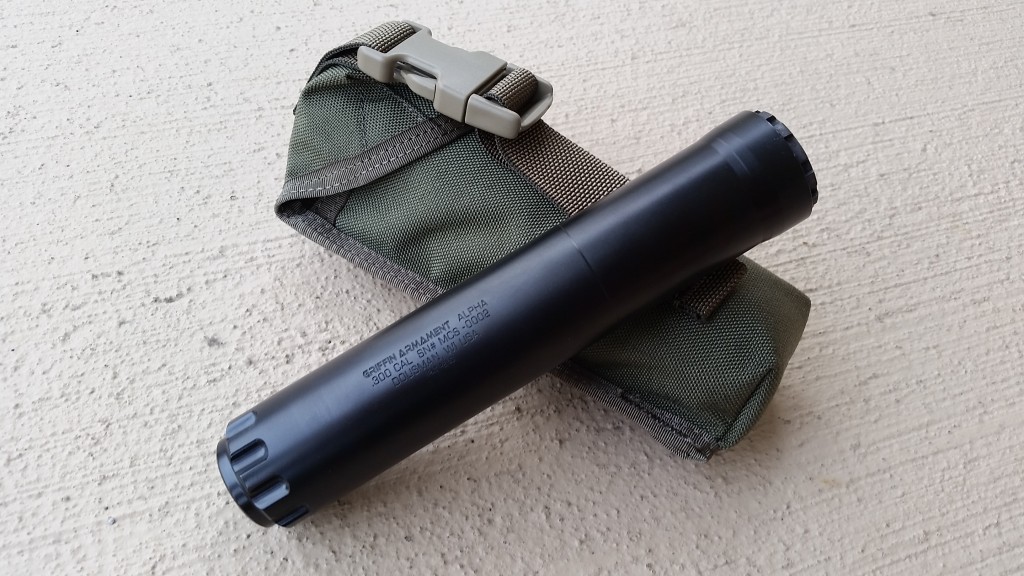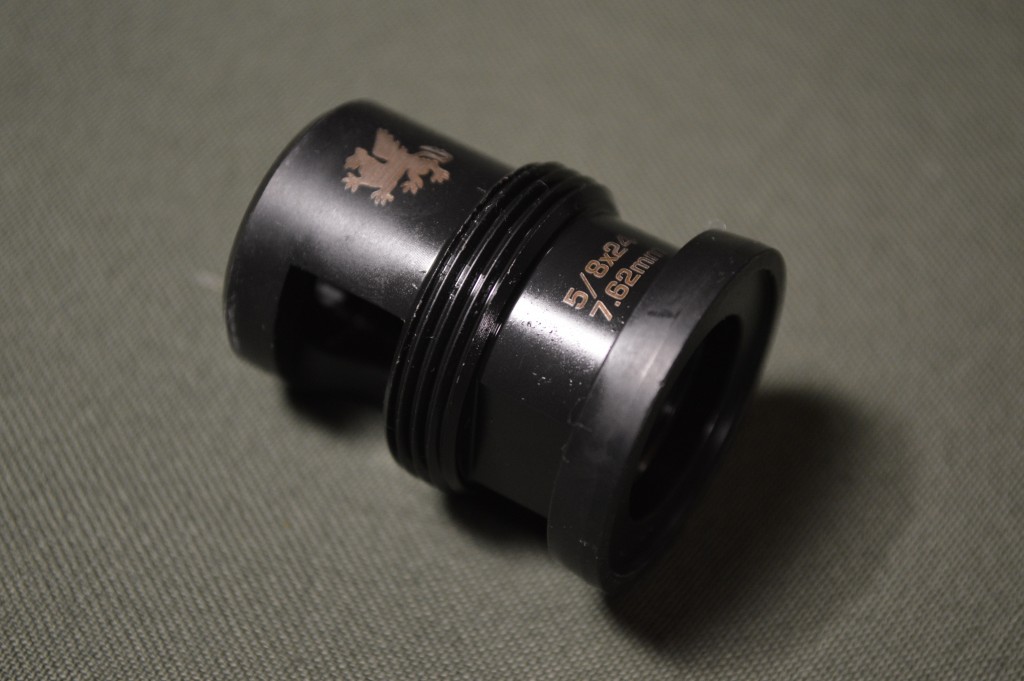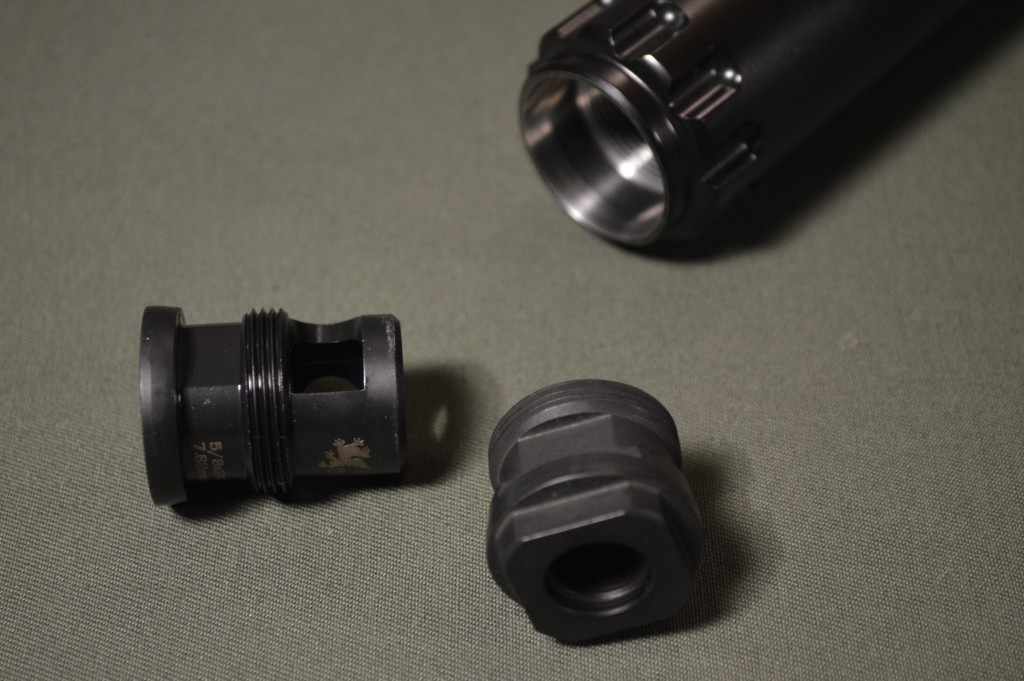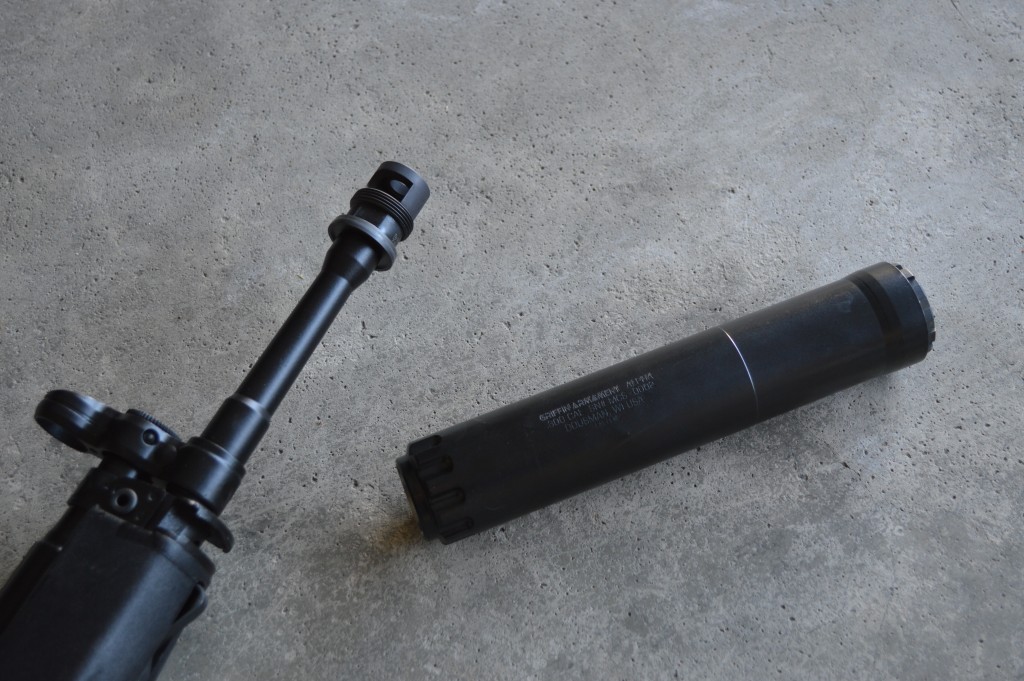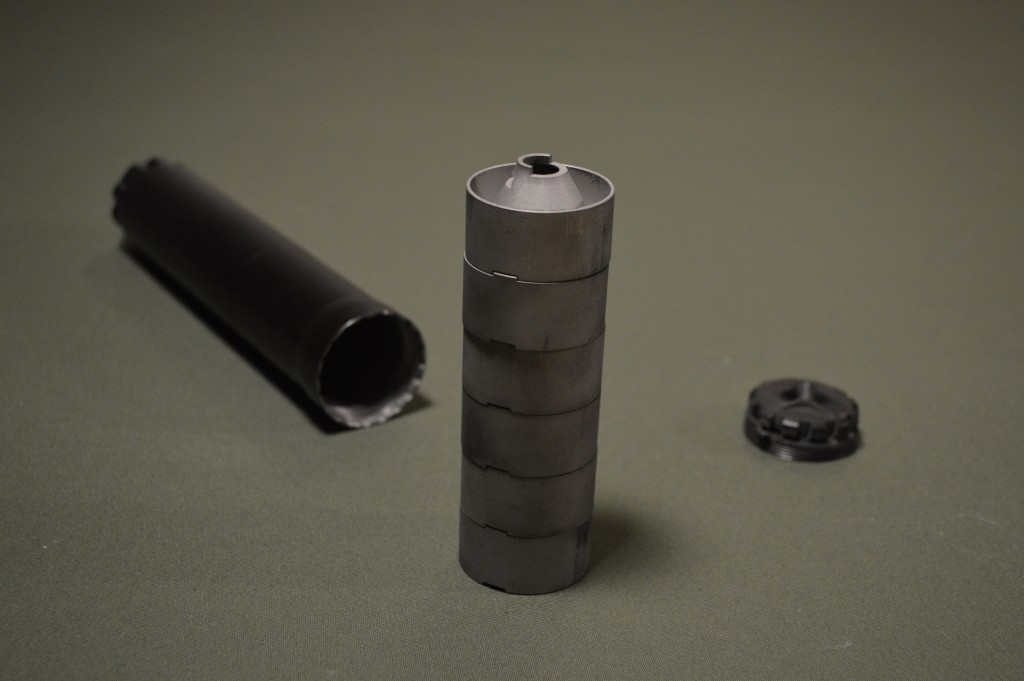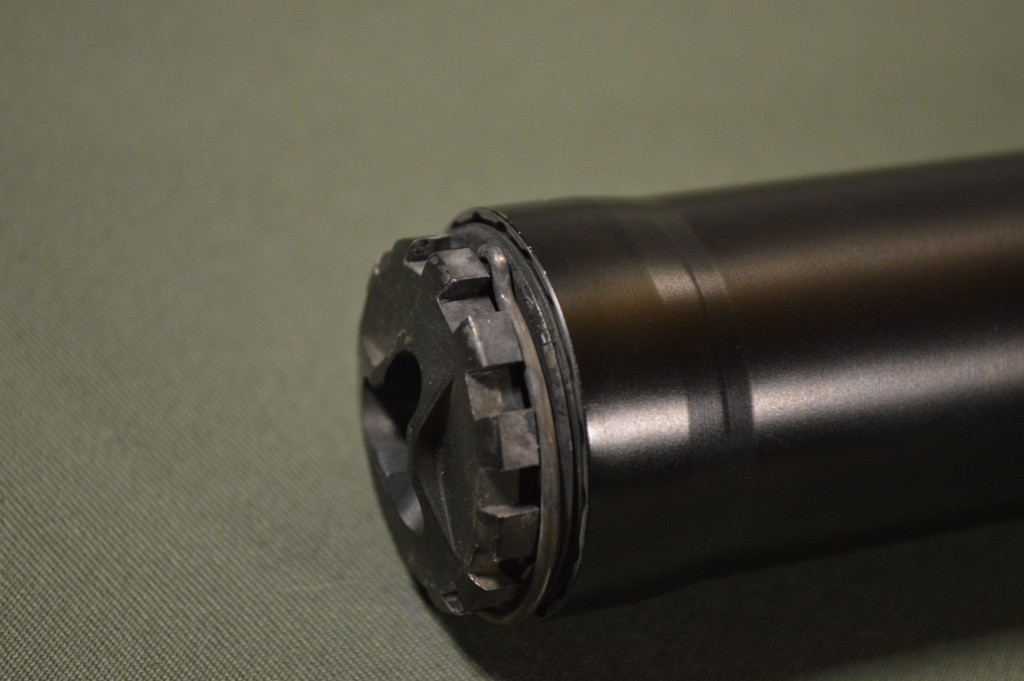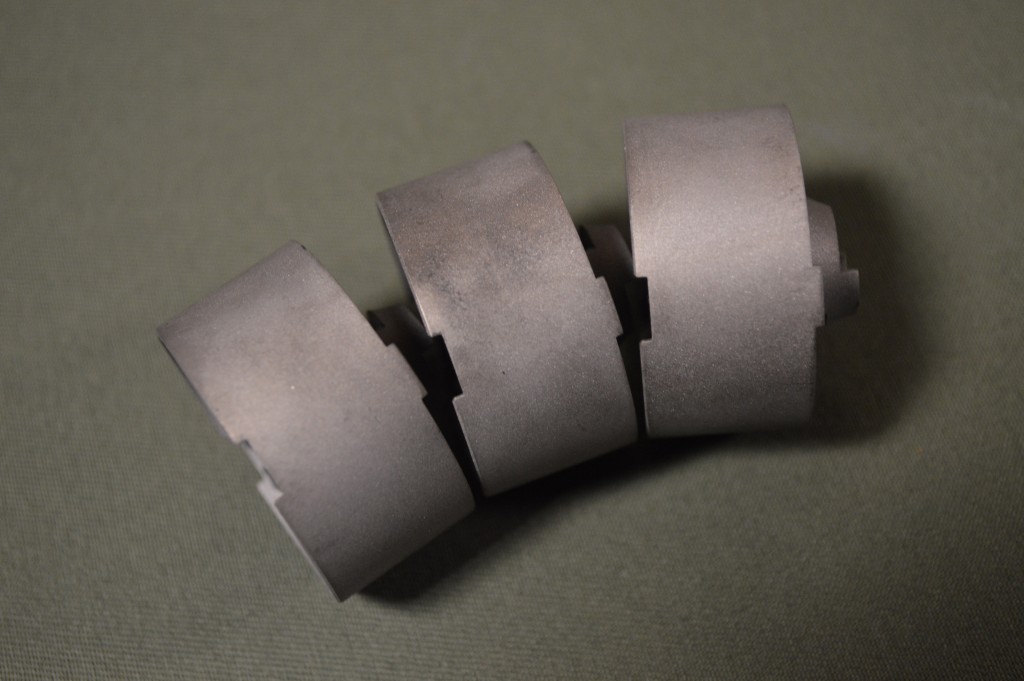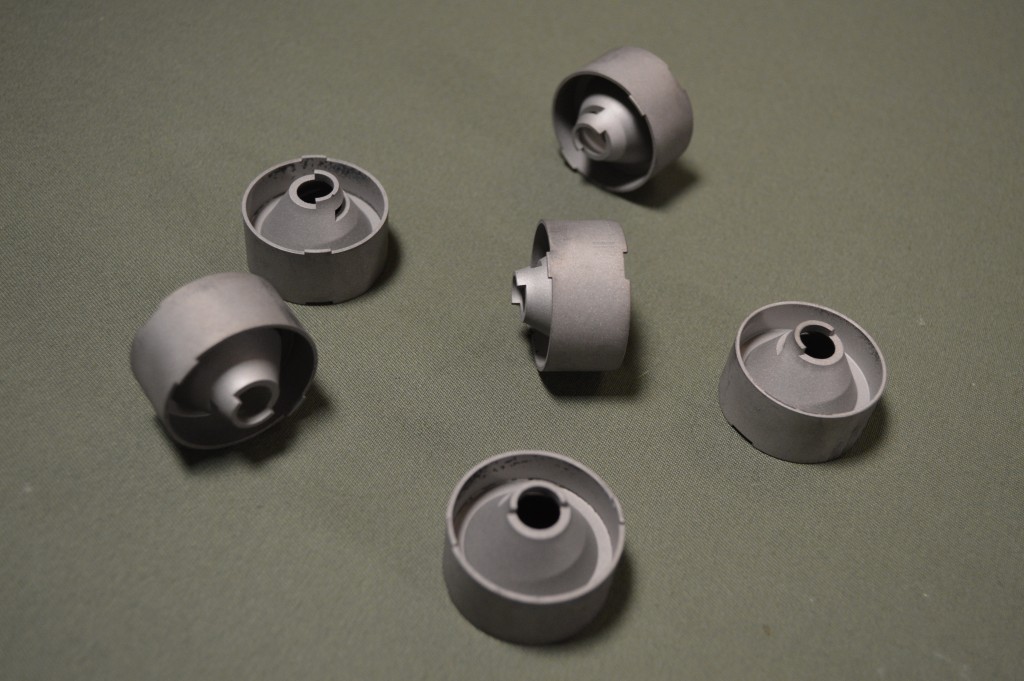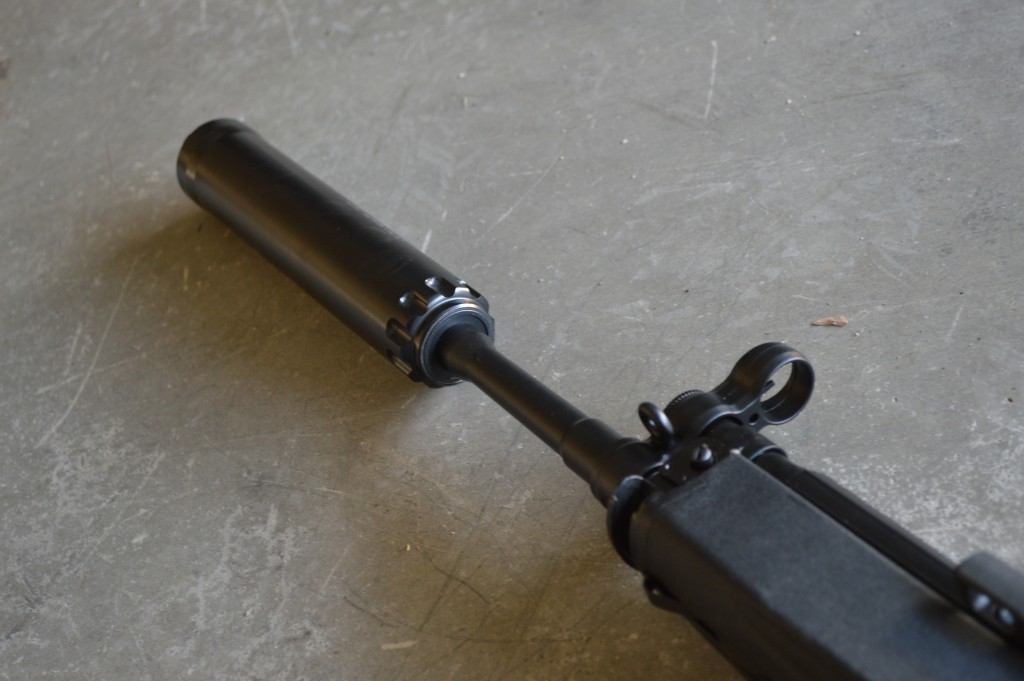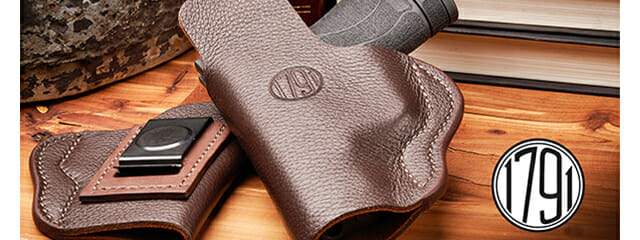Silencer Shop Authority: Griffin Armament Alpha/Paladin Review
Author’s Note: Griffin recently renamed the Alpha due to copyright concerns. It is now called the Paladin, but remains the same overall design.
When Griffin Armament’s Optimus came out last fall, I asked the company about the possibility of titanium suppressors at some point in the future. As I saw it, Griffin had covered just about every silencer category with at least one of their products and I wasn’t quite sure where they would go next. In a matter of hours, the company replied that yes, they were working on something, but weren’t quite ready to talk about it. My interest fully peaked, I was left to speculate.
The Alpha is the can that Griffin was talking about, and it comes with a surprise. Not only does its partially titanium baffle stack make it one of the lightest .30 caliber silencers on the market, the Alpha can also be disassembled for cleaning. Since other takes on user serviceable rifle suppressors have been less than stellar, I was excited to see a company like Griffin grab the concept by the horns. Thankfully, just a few weeks after its release, the good folks at Silencer Shop reached out to schedule time with this exciting new can. Let’s take a closer look at the Griffin Armament Alpha.
Size & Weight
It used to be that if a .30 caliber suppressor came in under 20 ounces, most people considered the can fairly light. These days however, if a company doesn’t have a .300 Win Mag silencer pushing the sub-pound threshold people seem to wonder what’s going on. Depending on configuration (direct thread versus quick detach mount), the 14.5 ounce Alpha stands as the lightest magnum-rated suppressor on the market.
The more time I spend shooting with suppressors, the more weight sensitive I seem to become. While its closest competitor, the SilencerCo Omega, does weigh slightly less in its direct thread format, the Alpha takes the cake on the QD front. Even on my relatively long PTR-91, the Alpha kept the rifle manageable and did not affect overall balance nearly as badly as heavier cans I’ve tried. It certainly is refreshing to see manufacturers continuing to push the envelope with lighter and lighter rifle suppressors.
The Alpha’s overall length is right in line with other mid-size .30 caliber suppressors on the market. At 7.75”, it offers enough volume to provide solid suppression without being as unwieldy as larger 9” cans. Also like others in its category, most of the Alpha’s tube is 1.5” in diameter (it does increase to around 1.55” near the removable end cap).
Mounts
I’ve mentioned this in previous reviews, but it bears repeating. Griffin’s Taper Mount system is easily among my top two or three favorite QD designs. I’m a firm believer that keeping the mounting system simple is critical for reliable attachment and removal. With coarse threads in front of a small rear taper, Griffin’s mounts feature no real wear surfaces and unlike designs that place the taper in front of the threads, don’t seem to get stuck to mated suppressors. Having said that, the system is very secure and I have yet to experience any loosening of a Griffin can during use. The only complaint I have about the Taper Mount system is that Griffin places wrench flats forward of the taper, which can be frustrating if the mount is not properly torqued and decides to come off with the suppressor.
Included with the Alpha are two mounts. The 5/8×24 threaded Taper Mount Minimalist Brake weighs just 1.7 ounces and is a mere 1.34” long. It is highly effective in reducing muzzle rise and felt recoil, but thanks to its concussive disposition is unlikely to make many friends at the range. Also in the box is a 1/2×28 direct thread adapter. Unlike the brake, the adapter does have external wrench flats that can be used to snug the part onto a rifle or inside the silencer.
Materials & Design
The Alpha is the first can in Griffin’s lineup to feature titanium in any capacity. Inside its nitride-treated, 17-4 stainless tube and behind a 17-4 blast baffle rest five 6AL4V titanium distal baffles. Whereas some companies have opted for titanium tubes, Griffin chose to retain the durability of a 17-4 can and still managed to keep the unit under one pound. While titanium baffles might not be as durable as those made of stainless, Inconel, or Stellite, they are shielded by the 17-4 blast baffle and should work perfectly well for 99% of users.
Beyond its light weight, the Alpha’s main selling point is its removable baffle stack. By unscrewing a novel, ratcheting end cap at the front of the suppressor, users can remove the Alpha’s six-baffle stack from its tube. The Alpha is a great suppressor as a whole, but the end cap might be its most impressive feature. Using a simple spring, the cap engages notches in the suppressor body to prevent loosening. In fact, the lockup is so secure that unscrewing the cap by hand is more or less impossible. To assist in disassembly, the end cap is notched to accept common AR-15 castle nut wrenches. Griffin includes such a wrench with the Alpha and using it makes cap removal quick and easy.
The beauty of having a user serviceable .30 caliber silencer is that shooters can use lead ammunition without worrying about buildup and fouling inside the tube. This feature is especially advantageous for those who like to roll their own .300 BLK loads with cast lead bullets. It also facilitates the Alpha’s use with filthy .22 LR. Since the baffles are stainless and titanium, you can use just about any cleaning agent to remove fouling. Griffin has even said that sandblasting them is perfectly okay.
All six baffles are conical, or M-style affairs with clipped bore holes. Unlike older Griffin designs, the Alpha’s baffles also feature small slits near the apex of each cone that seem to serve a few different purposes. As far as I can tell, they cut down on first round pop (FRP) and backpressure, but they may also shave a decibel or so at the muzzle by promoting gas turbulence inside the can. I’ll save my performance discussion for the Range Report.
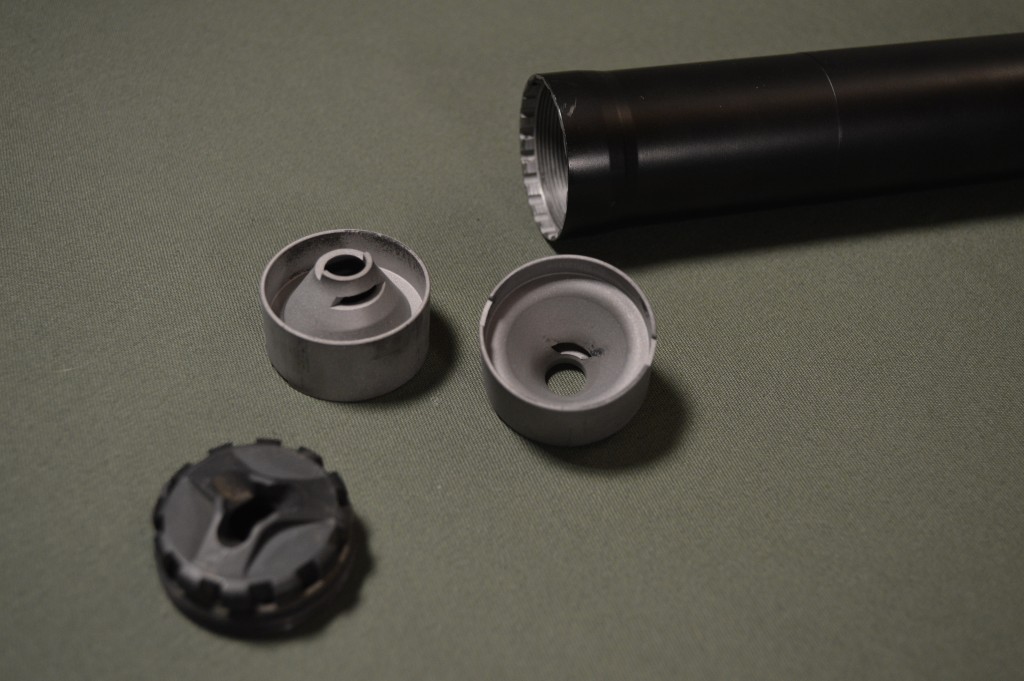
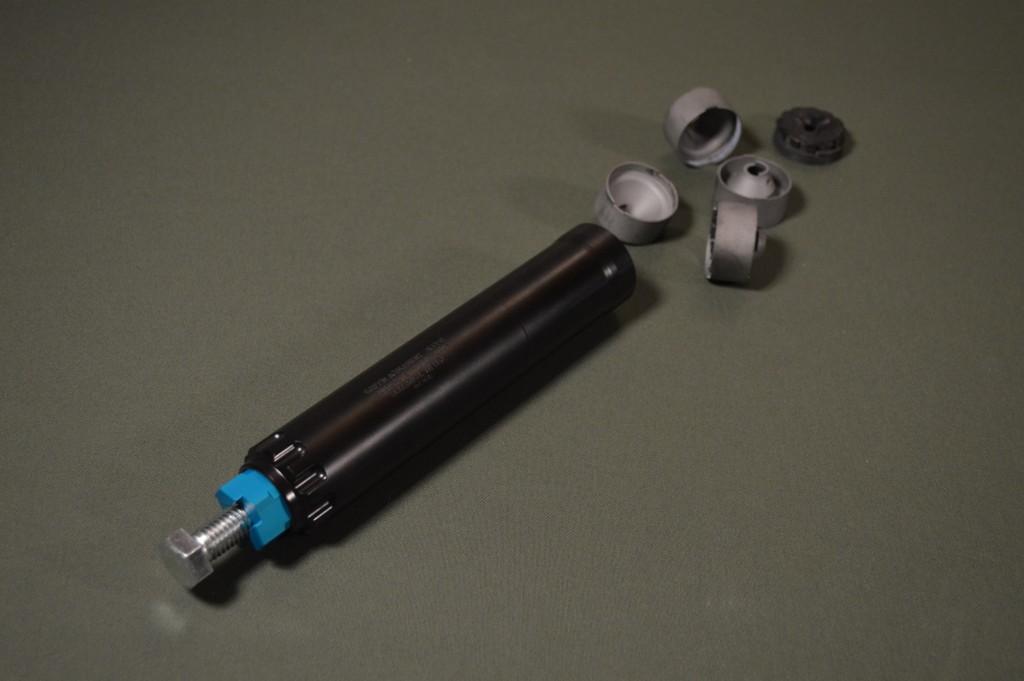
Range Report
My range day started with the Alpha mounted to my 16” .300 BLK AR-15 upper. Paired with Remington’s (notoriously loud) 220 grain subsonic ammunition, Griffin’s newest can performed very well. It doesn’t quite reach the performance levels of longer 9” cans, but the Alpha compares favorably to other mid-size suppressors in terms of both overall suppression and tone. I have yet to see test numbers from Silencer Shop, but my guess is that the Alpha hovers around 128 to 130 dB at the muzzle. Backpressure and ejection port noise with the Alpha seemed nearly identical to the 7.5” configuration of the Rugged Surge I tested a few weeks ago.
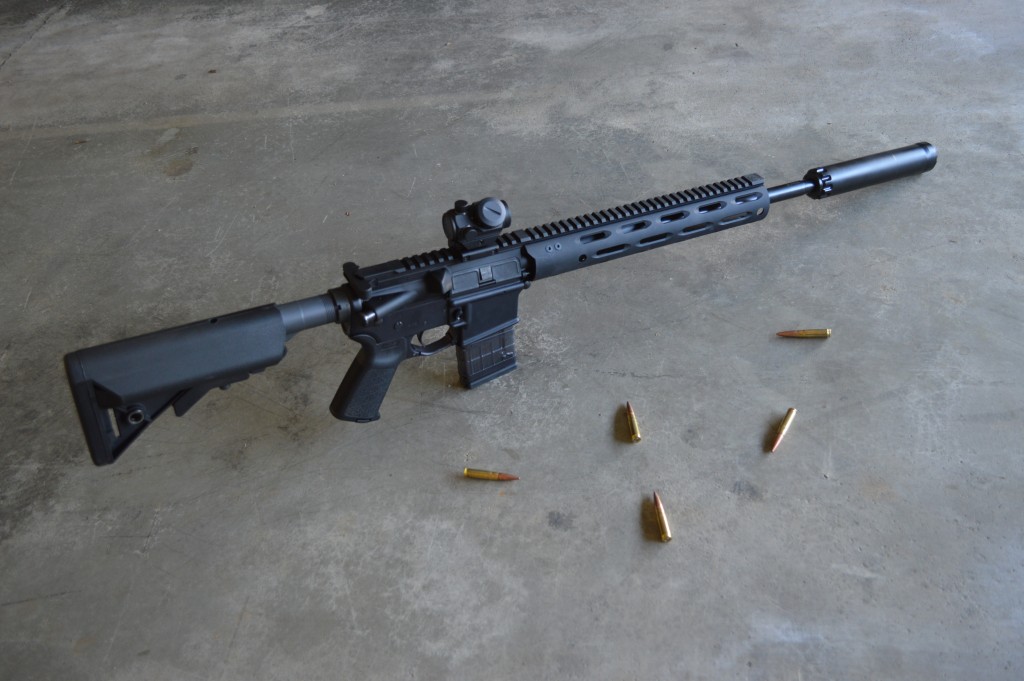
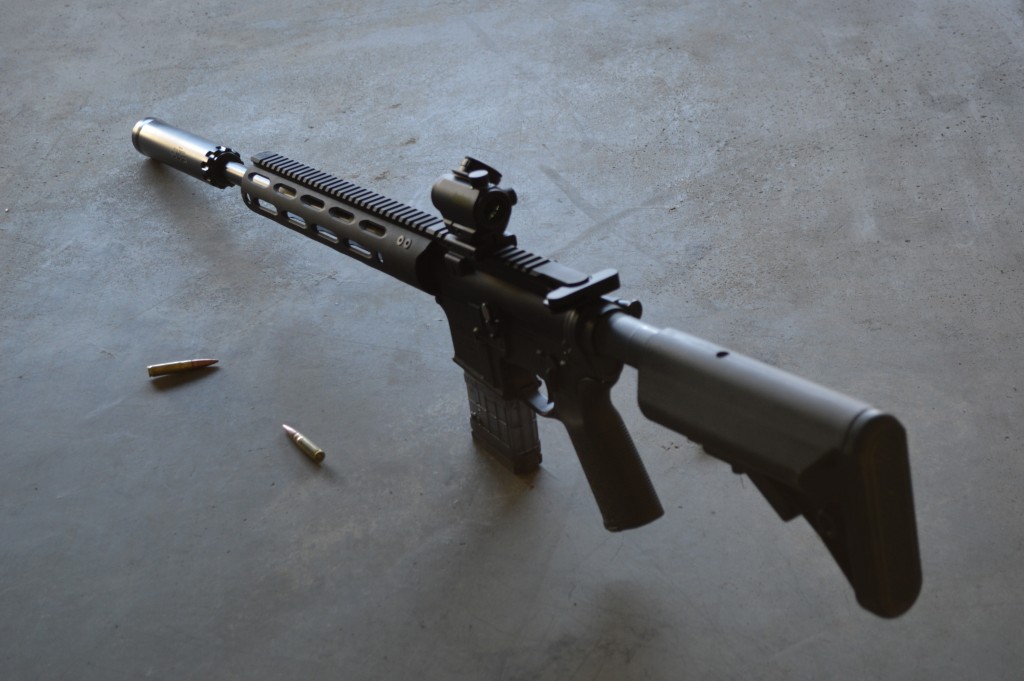
Next, I mounted the Alpha to my PTR-91 A3R from Atlantic Firearms. On this .308 behemoth, the can’s weight and handling advantages were especially noticeable. With heavier suppressors, I’ve found that the A3R becomes so front heavy that it tends to pull away from my shoulder. This was not the case with Griffin’s new featherweight.
Even considering the .308’s supersonic nature, the Alpha did an excellent job of taming the round. I typically shoot on a covered range with a tin roof and concrete floor and the concussion from .308 rifles can be jarring at times. With the Alpha, the experience was positively pleasant, but the suppressor did add enough backpressure to noticeably increase recoil. I’ve swapped my PTR’s locking piece for an RCM #17 one, which slows down unlocking and reduces bolt speed, so reliability was unaffected.
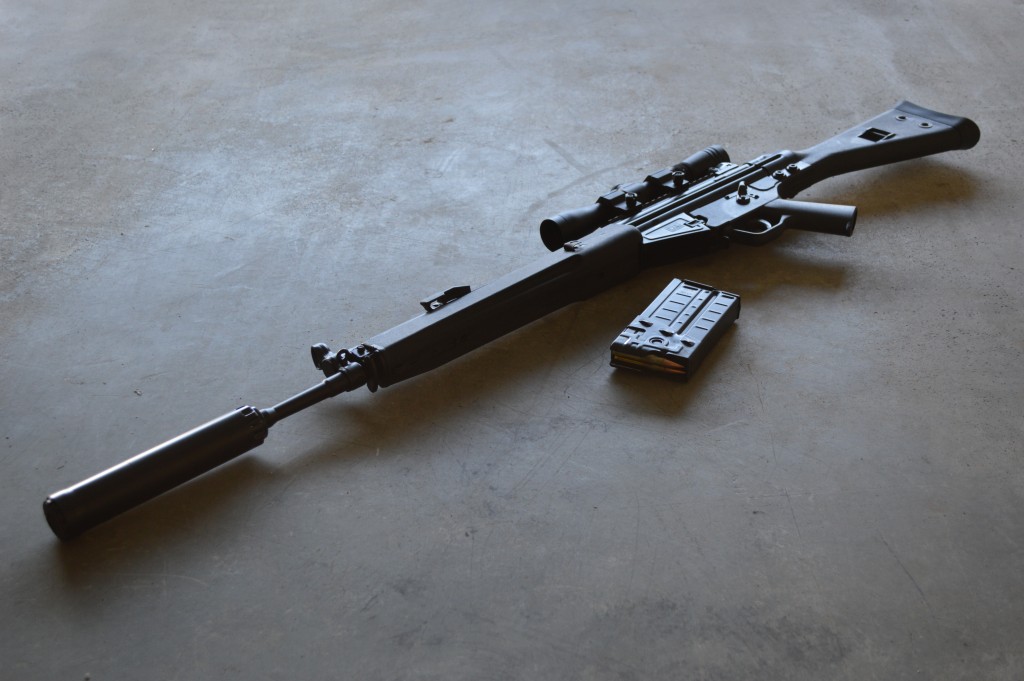
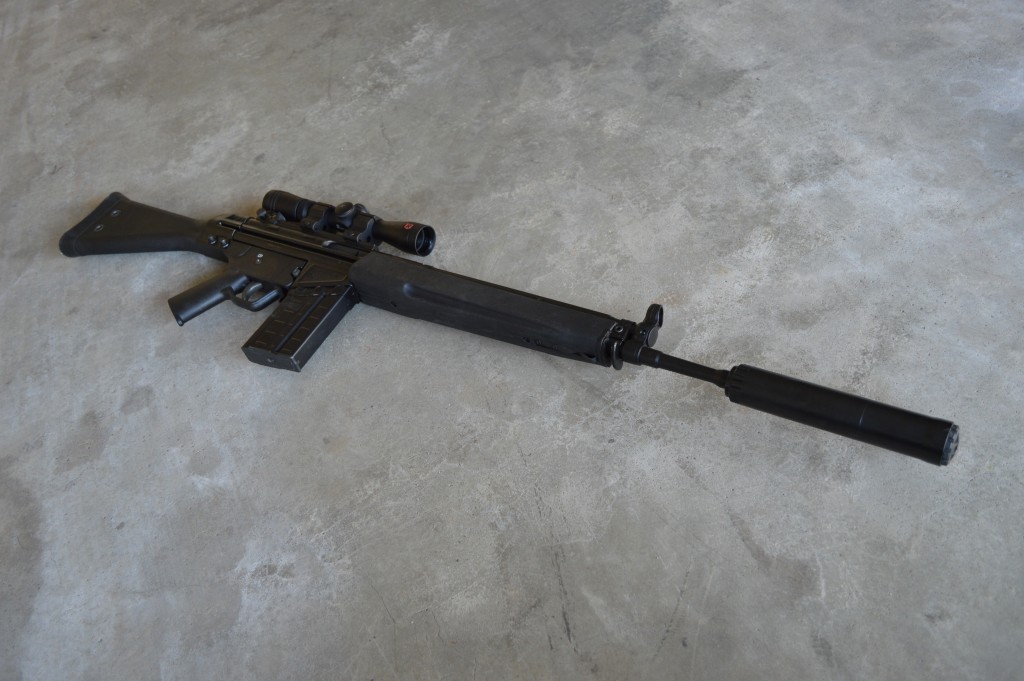
Since the Alpha is user serviceable and light for its size, I was especially excited to see how it performed on my .22 LR SIG 522. As you might expect from a grossly oversized can on a rimfire rifle, the Alpha did exhibit some FRP, probably in the +4 to 5 dB ballpark. After the first shot, performance was excellent and the can’s deep tone made it more pleasant than many .22 caliber silencers. As I’ve come to expect from Aguila’s standard velocity .22 LR, some rounds did eclipse the sound barrier, so keep that in mind when watching the video. Though I am still waiting to see meter results, I fully believe the Alpha to be a sub-120 dB suppressor when used with reliably subsonic ammunition and .22 caliber rifles.
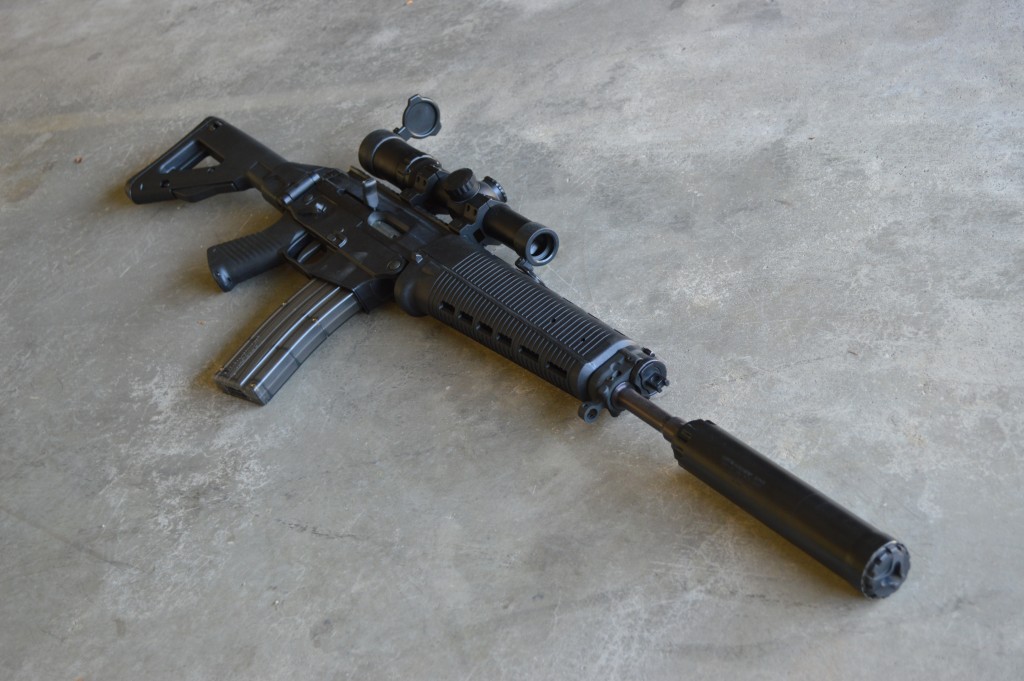
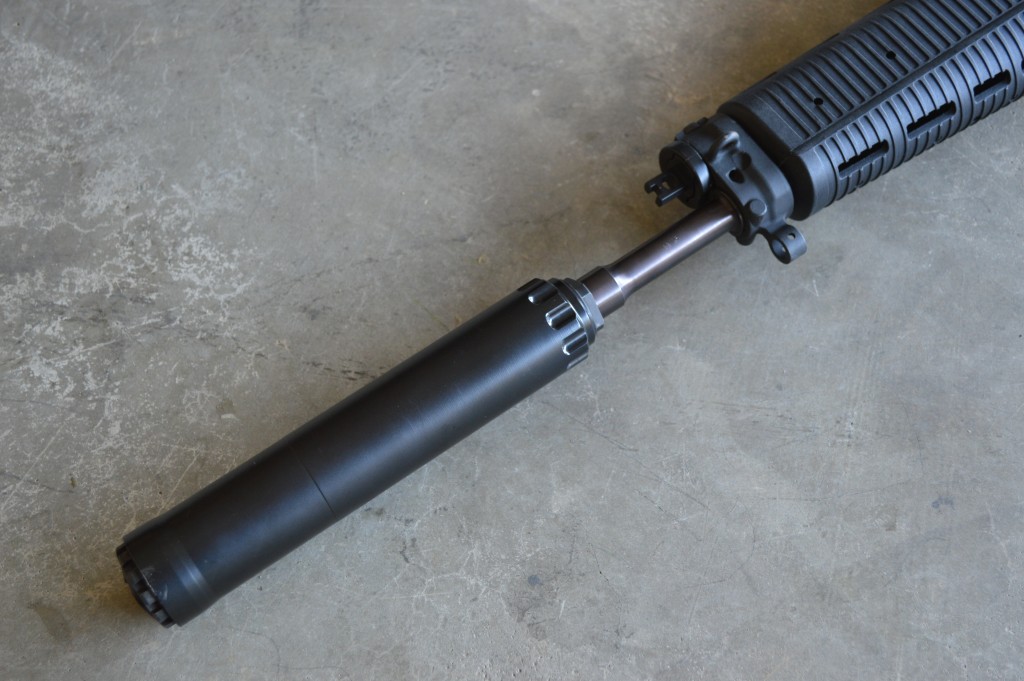
Before packing up, I wanted to examine the Alpha’s effect on my PTR-91’s point of impact (POI). Because the PTR has a slender barrel, I’ve found it to be relatively sensitive to suppressors. With heavier cans on this rifle, POI shift in the 3 to 4 MOA range is not uncommon. At 50 yards and with the Alpha mounted, my groups were 1.25″ higher (2.5 MOA) and to the left of my unsuppressed ones.
Conclusion
In many ways, the Alpha offers shooters the best of all worlds. It combines user serviceability and excellent suppression in a package that is lighter than practically every other silencer in its class. As someone who prioritizes light weight and enjoys the flexibility of using a can on both centerfire and rimfire hosts, I find the Alpha especially appealing. In fact, I’ll probably purchase one for myself at some point.
Like most of Griffin Armament’s lineup, the Alpha is competitively priced. Depending on local Powered By dealer’s pricing, interested shooters can find the suppressor at Silencer Shop for around $850.
This has been a review of products sold by Silencer Shop. All opinions are my own.
An information security professional by day and gun blogger by night, Nathan started his firearms journey at 16 years old as a collector of C&R rifles. These days, you’re likely to find him shooting something a bit more modern – and usually equipped with a suppressor – but his passion for firearms with military heritage has never waned. Over the last five years, Nathan has written about a variety of firearms topics, including Second Amendment politics and gun and gear reviews. When he isn’t shooting or writing, Nathan nerds out over computers, 3D printing, and Star Wars.

